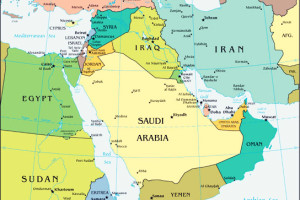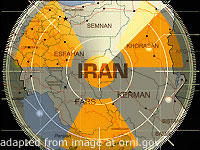How Much Power Will Russia’s S-300 Missile Defense Systems Give Iran?

(Moscow Times – themoscowtimes.com – Matthew Bodner – April 15, 2015)
Moscow’s decision to lift its unilateral ban on exporting advanced S-300 air defense system to Iran will boost the Islamic republic’s air defense capabilities, but their military impact depends on the outcome of ongoing negotiations on Iran’s nuclear program.
The air defense systems, built by Russia’s largest defense contractor Almaz-Antey, are some of the most advanced weapons of their kind on the market, which has prompted fears that the weapons would be used to defend Iranian nuclear sites.
 Iran signed a contract with Russia to buy five S-300 systems for $800 million in 2007, but in 2010 then-President Dmitry Medvedev decided to freeze delivery as a sign of good will toward the West.
Iran signed a contract with Russia to buy five S-300 systems for $800 million in 2007, but in 2010 then-President Dmitry Medvedev decided to freeze delivery as a sign of good will toward the West.
With Iran and international community closer than ever to a deal, President Vladimir Putin lifted the ban Monday. No delivery date has yet been set.
Defending the decision, Russian Foreign Minister Sergei Lavrov explained that “[the S-300] is not designed for attacks and will not put at risk the security of any regional state, including Israel,” news agency TASS reported Monday.
The S-300 systems are not covered by the UN arms embargo in place on Iran, since it is classified as a defensive weapons system and has no offensive use.
“It would provide Iran with a long-range air defense capability that is currently lacking in its inventory [and] provide an additional defensive tier to Iran’s air defense plan,” Ben Goodlad, a weapons expert at defense analytics firm IHS was quoted as saying in a statement.
Depending on the specific model and the missiles loaded into the system, an S-300 battery can track up to 100 targets and engage 12 to 36 of them within a range of 150 kilometers.
How Iran would use an air defense system with these kinds of specifications depends on the outcome of the current nuclear negotiations.
If the deal falls through, and Iran continues its nuclear program, then the S-300s would most likely be used to defend Iranian nuclear facilities, greatly increasing the cost of any U.S.- or Israeli-led air strikes on the sites.
But if the deal goes through and fears over Iranian nuclear weapons fade, the S-300s would likely be used by Tehran to bolster its defenses against more capable regional rivals – such as Saudi Arabia and the United Arab Emirates.
This point was made by Lavrov: “For Iran, taking into account the very tense situation in the region surrounding it, modern air defense systems are very important,” he was quoted by TASS as saying Monday.
In particular, Iran is significantly outgunned by its Gulf rivals the UAE and Saudi Arabia, which is flying modern U.S. aircraft such as F-15s. Last year, Saudi Arabia purchased $1.5 billion worth of aircraft, while the UAE purchased $105 million worth, according to data published by the Stockholm International Peace Research Institute.
Meanwhile, Iran’s military is an aging force populated with 1970s Soviet and American hardware, such as MiG-29 interceptors and U.S. F-4 Phantoms.
Even then, the U.S. planes in Iran’s inventory have only been kept flying by “spare parts acquired in Vietnam that were left behind after the U.S. withdrawal,” said Ben Moores, a senior military analyst at defense analytics firm IHS.
The five S-300s stipulated in the 2007 contract with Russia would go a long way to redressing Iran’s lack of aerial firepower in the region.
